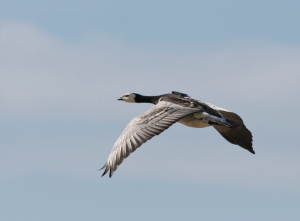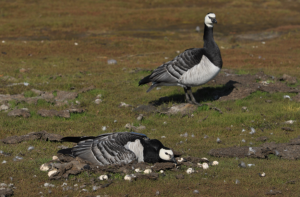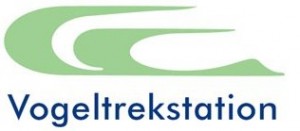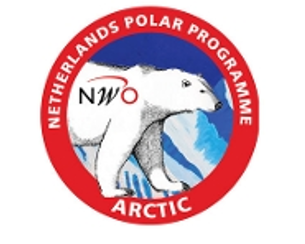Barnacle Goose migration and Arctic warming
Species: Barnacle Goose
Barnacle Geese are long-distance migrants which we see wintering in the Netherlands, but which breed far to the north in the Russian Arctic. While migrating northwards to the breeding grounds, the geese time their migration schedule along a ‘green wave’ of spring grass growth, from which they can feed on stopovers. They overtake this green wave and arrive at the breeding grounds well before this food peak which then coincides with the chick growth period. Arriving early on the breeding grounds trades off with acquiring ample body stores to fuel migration and the incubation period. Individual geese differ in their migration strategy in order to balance this trade-off and maximize reproductive output while ensuring own survival. Traditionally, most geese would make use of stopovers during their migratory journey, but during the last decades more geese prolong their stay in the Netherlands and subsequently skip some stopover sites in the Baltic region.

Barnacle Goose 6112 “Oksana” returned to the breeding grounds in 2015 and successfully hatched 3 chicks
Future climate change is expected to lead to a stronger warming in the Arctic region than elsewhere, a process known as Arctic amplification. This could very well lead to a mismatch in food peaks along the migratory route of Barnacle Geese, which would force the geese onto an even tighter migration schedule. How well can Barnacle Geese cope with Arctic amplification, and how would this influence the trade-off between arriving early in good physiological condition and subsequent breeding success? The current migration strategy of skipping stopovers might show the consequences of this tighter migration schedule on the reproductive success of the geese. One of our main aims is to quantify carry-over effects of different migration strategies on subsequent breeding success in the Arctic.
Using UvA-BiTS loggers we were able to track 24 Barnacle Geese to their breeding grounds in 2015, and we now can determine the migration routes and schedules of the geese. On the breeding grounds in the Russian Arctic we monitored breeding success and measured condition of the geese on arrival. The accelerometer on the UvA-BiTS logger also allows us to closely follow the daily activities of the geese, and we can measure incubation times on the nest and time budgets during migration. We will use this information in migration models, together with data on the effects of climate warming on food sources for the geese, to make predictions about how the geese will react to future mismatches in food peaks and determine whether they can cope with Arctic amplification.
Follow this research project on www.tobseda.com
In 2015 we found that Barnacle Geese use three different migration strategies to fly to their Arctic breeding grounds: some geese make use of stopovers in the Baltic region (orange), but other geese leave the Netherlands only mid-May. All geese pass the landmass of Finland-Russia simultaneously after which some geese stop along the Arctic coast. Other geese are able to fly the entire migratory journey in 5 days. Watch this animation.
A short documentary on our research was shown on Dutch television, watch here.
Contact Persons:
Thomas Lameris, NIOO Wageningen t.lameris@gmail.com
Willem Bouten, Universiteit van Amsterdam w.bouten@uva.nl






